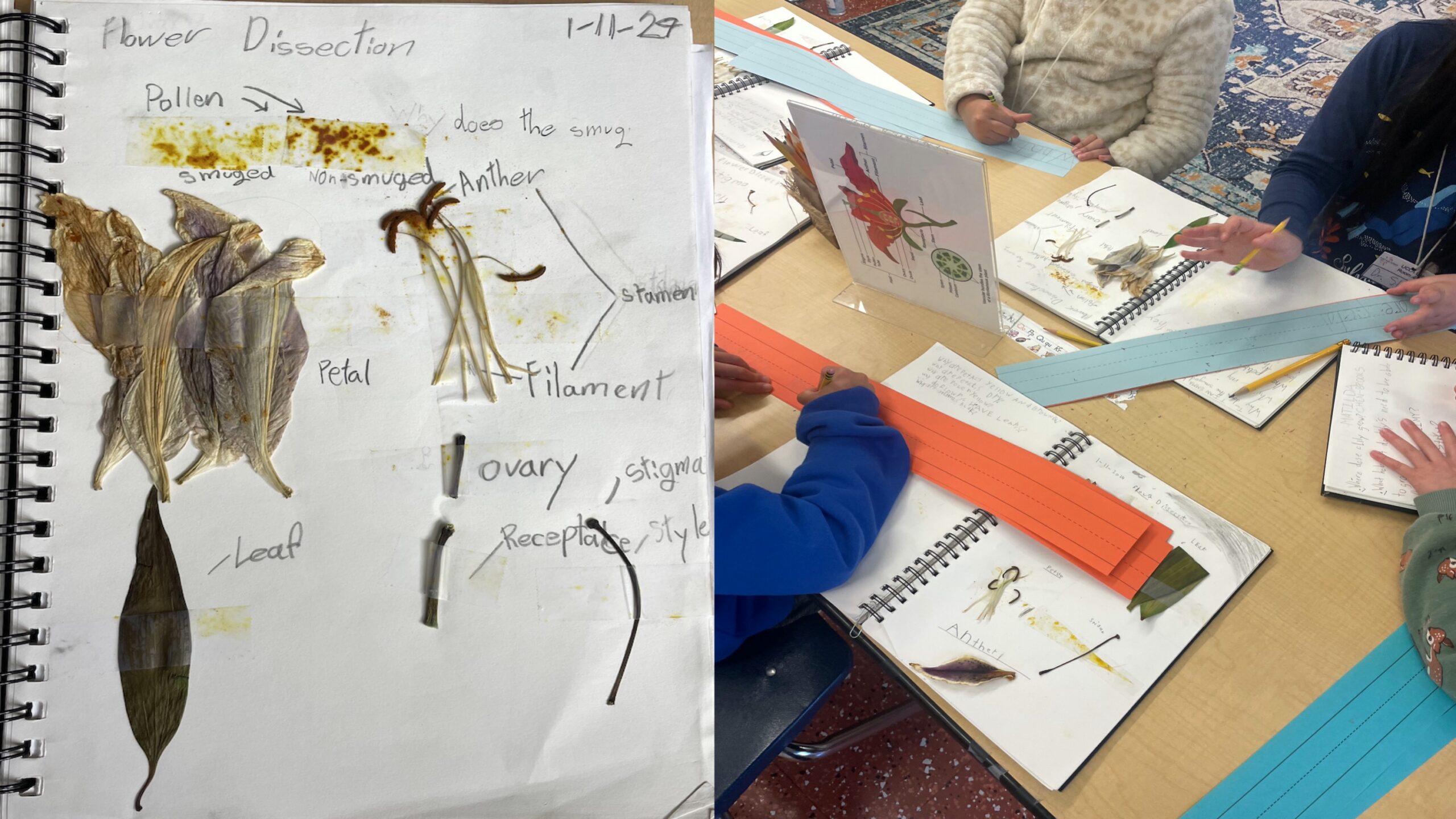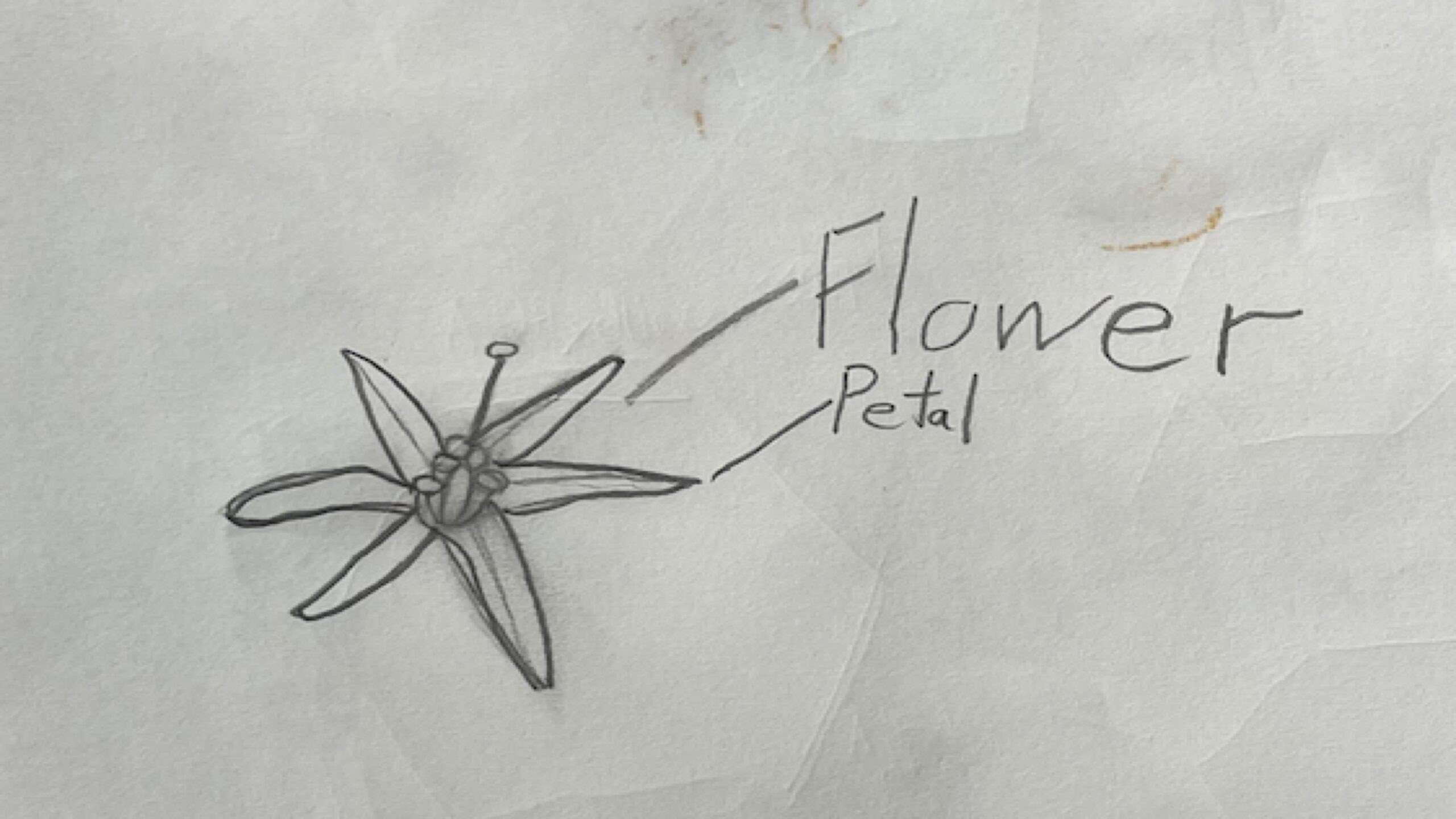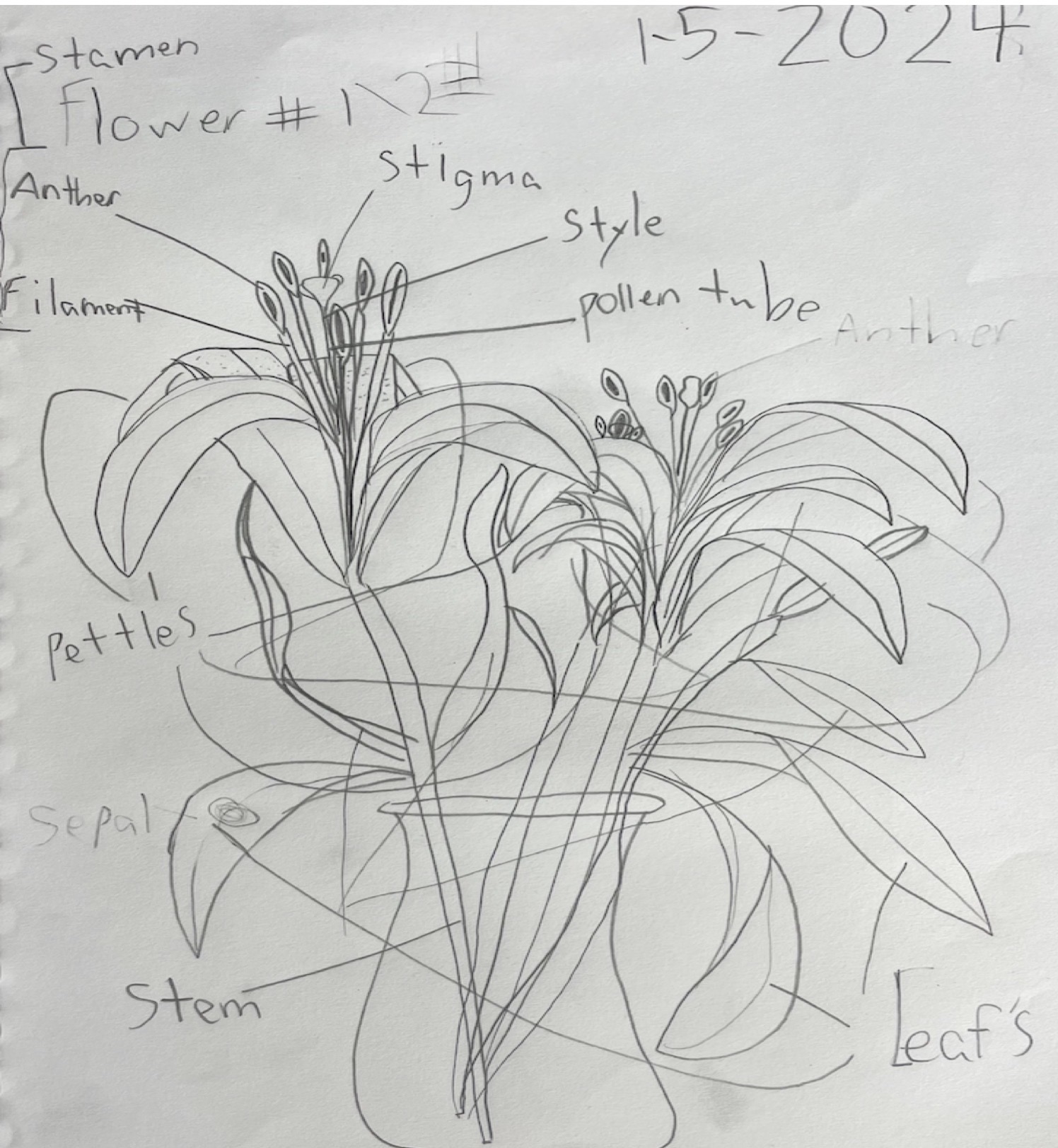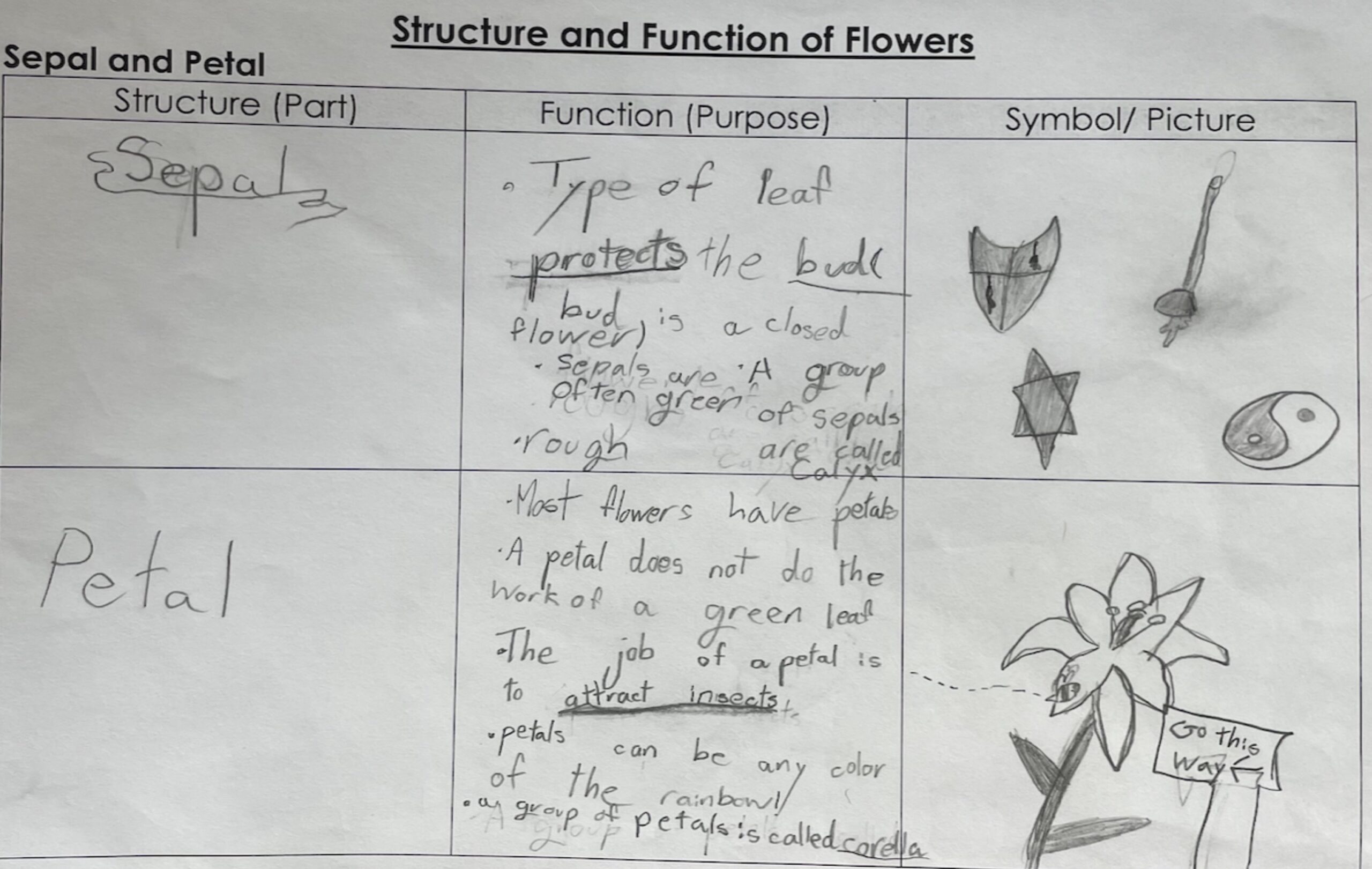In the world of education, innovative approaches are constantly emerging to engage students in meaningful and memorable learning experiences. One such experience unfolded in the lab school classrooms recently as we delved into the fascinating realm of flowers, turning a lesson on flower parts into a dance-filled exploration. But why introduce movement into the learning process and how did this process look like?
During my time at the lab school, I have been giving art lessons, observing class sessions, and attending lesson planning meetings. It has been incredibly rewarding observing the students’ learning processes. My observations revealed the power of embodied learning, where students not only engaged with the subject matter on a theoretical level but also physically embodied the concepts they were learning.
The primary level this year is studying the relationships between people, pollinators, and plants. This winter quarter, I got to spend time with primary students as they were using art and play to study plants. This is a continuation of the work we were doing this past quarter learning about the importance of plants for pollinators and planting plants to attract pollinators around campus. Watching them interact with the material, I was struck by the curiosity that guided their explorations. It became clear that these interactive sessions were not just about learning facts but about fostering a deeper connection with the natural world.
Our journey to understanding the flower begins with learning about the foundational parts of flower anatomy. Through visual identification and learning about functions, students laid the groundwork for a more detailed exploration. Students were asked to draw their initial understanding of the parts of a flower. The image below is an example of what the drawings looked like:
Image 1. Initial drawing of the parts of a flower.
Living orchids were then brought into class, and students spent time dissecting the flowers and identifying each part in their sketchbooks. Students were encouraged to lay out all their questions surrounding the functions of each of these parts. The questions covered everything from the texture, shape, and smell of the flower. “Why was the pollen so sticky?” “Why is the petal bumpy?”.

Image 2. Students referencing their sketchbooks as they come up with questions to share with the class as they dissect flowers.
To help answer these questions students were shown videos explaining the basic functions of each part. The videos were played in increments as students took notes in their sketchbooks on the information. In the following weeks, we spent time deepening their understanding of these functions by exposing them to books on the topic and different scientific excerpts that went into further detail on the various functions
Image 3. Example of the evolution of the drawings of the parts of the flower over time.
The students were also given the opportunity to create three-dimensional models of the flower through play-doh, where they had to think through how the individual pieces fit together. All the different forms of art to these topics allowed for a multimodal experiences of what a flower looks like and the specific functions of the parts. Establishing a solid foundation in identifying and comprehending the parts of a flower set the stage for the creative twists that would follow.
Image 4. Sample sketchbook page of the structure and function of the sepal and petal. Notice the translation of the functions into symbols.
The journey continued as students filled their sketchbooks with notes and drawings to represent the different parts. Once their sketchbooks were filled they transitioned to creating movement and poses. This transition was interesting to watch, as students began translating the concrete parts of flowers into the universal language of movement. Petals became landing pads for pollinators, sepals assumed fighting stances, and the stigma embodied the falling of pollen. Some parts still posed a challenge, such as the intricate pistil, but this allowed them to dive deeper into their understanding and creativity. We noticed that as the students were coming up with poses, they had the urge to move around and describe how the different parts moved and interacted with each other. The pistil’s pose for example (Image 5) went from being a static standing pose to an up and down motion symbolizing the pollen falling down the style. The anther went from a pose of holding pollen to a motion that represents how it moves in the wind to disperse pollen. The teachers allowed students to explore these movements and prompted them to begin thinking about ways they could represent these functions in a dance.

Image 5. Students embody the sepal’s function of protection (left). Students embody the anther’s function of holding pollen (center). Students embody the pistil (right).
The lesson began to come together as students integrated all flower parts into a cohesive dance. This process was creative and playful as they went into groups, distributed roles, and created sounds and music. Watching their thought processes as they were creating the different moves was very interesting and really solidified to me that they were truly grasping how the different parts work together. I could see them think through each part and try to decode how they worked together. This process not only solidified their understanding but also sparked insightful conversations. From literal interpretations to abstract and interpretive movements, students demonstrated an evolution in their comprehension, establishing a deeper connection with the interplay of flower parts.
In conclusion, this experience has underscored the transformative power of integrating movement into educational practices. It’s a vivid reminder that learning is not just about absorbing information but about making connections, sparking curiosity, and engaging with the world in a multidimensional way. Going forward we hope to use this knowledge they have built to teach students about the value of pollinators in our food systems and bring it back to the overarching theme of the role of people in this natural process.


